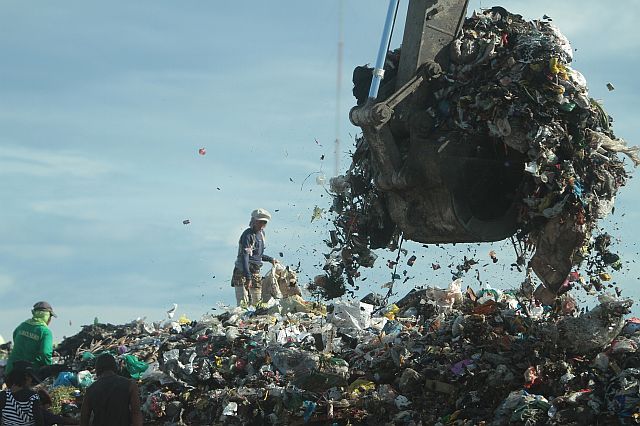
Scavengers are back after the Inayawan landfill was opened early morning yesterday. (CDN PHOTO/ FERDINAND EDRALIN)
The volume of garbage that was collected days after the opening of Inayawan Sanitary landfill was less than half of the 800-ton waste collected on opening day, which was attributed to the strict implementation of the waste segregation policy in Cebu City.
Although the “no segregation, no collection” policy was not yet being fully implemented, there was already a change in the amount of garbage collected yesterday, according to the Department of Public Services (DPS) head John Paul Gelasque.
“On the succeeding days, we collected only 400-500 tons of garbage,” said Gelasque.
He said their continuous effort to disseminate information on waste segregation held in barangays, down to the sitio (sub-village) level, helped in making the people, especially households to follow the rule.
According to Gelasque, only the garbage found on the city’s streets would be collected even if these were not segregated.
“Garbage on streets are exempted to this. We cannot just not accept the garbage,” Gelasque said in Cebuano.
Gelasque added that there will be a new schedule for the collection of different types of wastes.
The Inayawan Sanitary Landfill reopened last Tuesday after it was closed in January last year by the city government under the administration of former Cebu City mayor Michael Rama.
Rama decided to close the Inayawan landfill as City Hall was then preparing for its long term goal to rehabilitate the landfill into a productive, healthy, habitable and sustainable zone for economic development.
After the landfill was closed, the city government paid P700 per ton of garbage brought to a private landfill in Cebu’s northern town of Consolacion owned by Asian Energy Systems Corps.
But Cebu City Mayor Osmeña questioned the huge expense for garbage disposal and instead decided to stop dumping the city’s wastes in Consolacion and to reopen the Inayawan landfill until a more suitable replacement is found. / USJR Intern Dafne N. Wenceslao